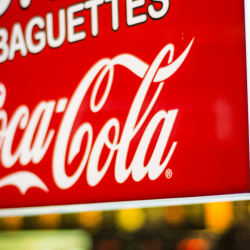The holiday season in the UK brings joy but also magnifies the challenges faced by many families in the midst of a cost of living crisis. As brands showcase their budget breaking Christmas campaigns, how are they balancing sales goals with an understanding of the struggles being faced by those most in need this year?
Understanding the climate
Rising costs have made Christmas an increasingly daunting time for working class families. According to the Office for National Statistics, prices of food and non-alcoholic beverages rose by 10.1%, and private rental prices rose to 6.1% in the 12 months to October 2023.
And recently, skyrocketing lunch prices were in focus at the FT who wrote about how expensive sandwiches are flawed economic indicators. It confirms how much the prices of our lunch staples at Pret have increased since 2020: ‘Pret’s bestseller, a tuna and cucumber baguette, has risen from £2.99 in December 2021 to £4.25 today — an increase of 42%. The price of a chicken Caesar and bacon baguette has jumped about 32% from £3.99 to £5.25. As it stands, an undiscounted online-ordered Pret ham sandwich, brownie and Coke was £5.55 in 2020, £6.80 last May, and £9.90 today.’
In the run up to Christmas, how are brands and retailers balancing their need to hit Q4 sales targets with the very harsh realities of the cost of living crisis?
Keeping prices stable
In October, Aldi, the ‘big shop’ go-to, price locked its Christmas dinner lines, with items including turkey crowns, pigs in blankets, Christmas puddings and vegetables at the same price as last year. The move was made after Aldi said a survey earlier this month of 2,000 UK adults by OnePoll found 35% were worried about the cost of Christmas and 40% were planning to spend less this year than last year.
Opting out of the Christmas ads race
This year, Iceland made the bold move to scrap its Christmas ad entirely in favour of investing money into keeping prices low. Iceland’s managing director, Richard Walker, took to X to explain the move: ‘Rather than spend millions creating and sharing a TV ad, we chose to invest the money supporting our customers during the cost-of-living crisis. No-brainer.‘
Practical support for families in need
Iceland’s decision to shun a Christmas ad is an admirable PR move but unlikely to make a difference to the millions who are facing a very lean Christmas. Rather than cancelling their Christmas campaign, perhaps Iceland could have redirected the planned investment into real life community programmes where this kind of money could make a tangible impact. For instance, Tesco’s Christmas Ad may help us to ‘become more Christmas’, but its food collection partnership with the Trussell Trust will help those on the lowest incomes survive Christmas.
Similarly, the Co-op’s new Christmas campaign pledges ‘no Hollywood actors, talking veg, or global singing stars‘. Instead, it focuses on ‘the gift of community spirit’ as it calls on members and customers to donate to local causes, which the retailer has pledged to match.
Advertising as a driver for economic opportunity
We know that overall, advertising is a vital driver of economic growth and opportunity. Patrick Collister explains in the documentary John Webster: The Human Ad Man that great work enables us to ‘build factories, keep people in jobs and support brands‘. Building a culture of ‘Collective Genius’ enables our industry to grow the economy.
Effective advertising can contribute to the well being of working class communities, particularly during Christmas with more jobs and busier high-streets.
Looking ahead
So in 2024, how should brands balance their efforts to drive effective advertising and ensure empathy with those struggling at this time of year?
First, think practically. Before making bold gestures like canning campaigns in solidarity for everyday people, ask yourself, ‘will this really make a difference or can we do more?’. Look for practical ways to support those communities most in need and then promote the hell out of it.
Next, look at the make-up of your own team, agencies and your suppliers. Will you realistically understand the nooks and crannies of normal people if your brand is built through a lens of total privilege. Getting the balance right means championing representation of people from working class backgrounds. And while this is a longer term play, fair representation is always a smart brand move.
Featured image: Thiago Matos / Pexels
































